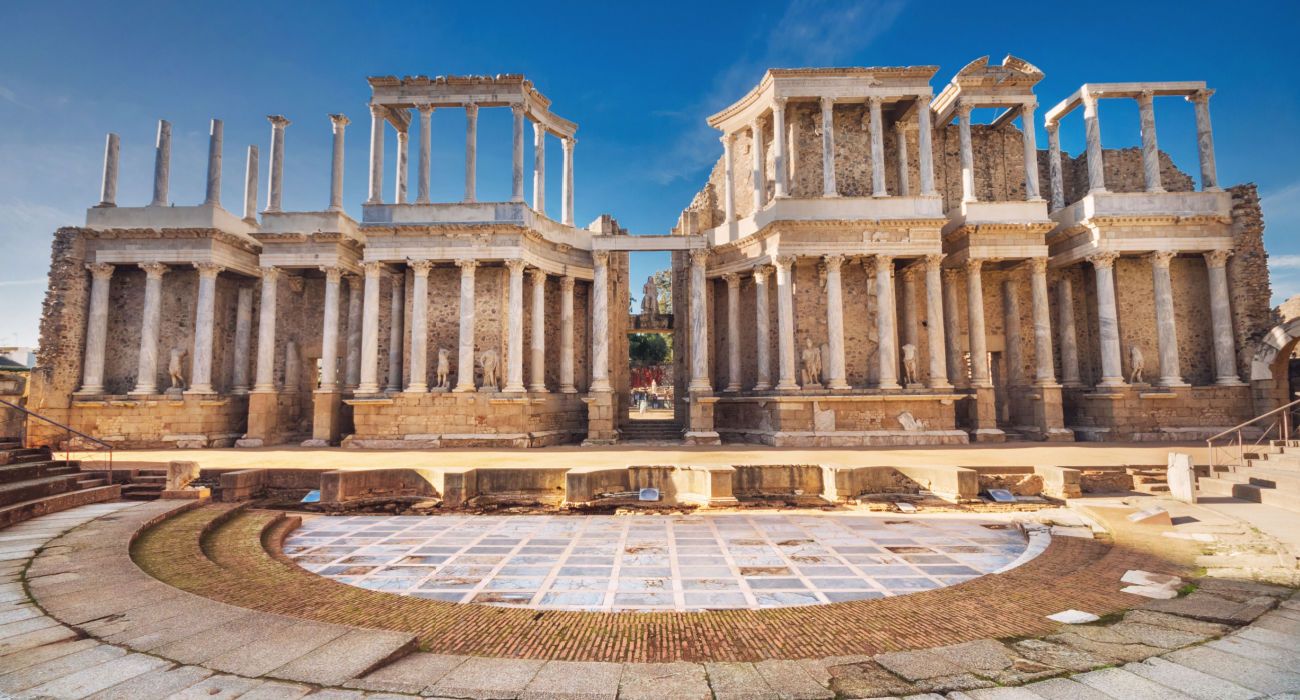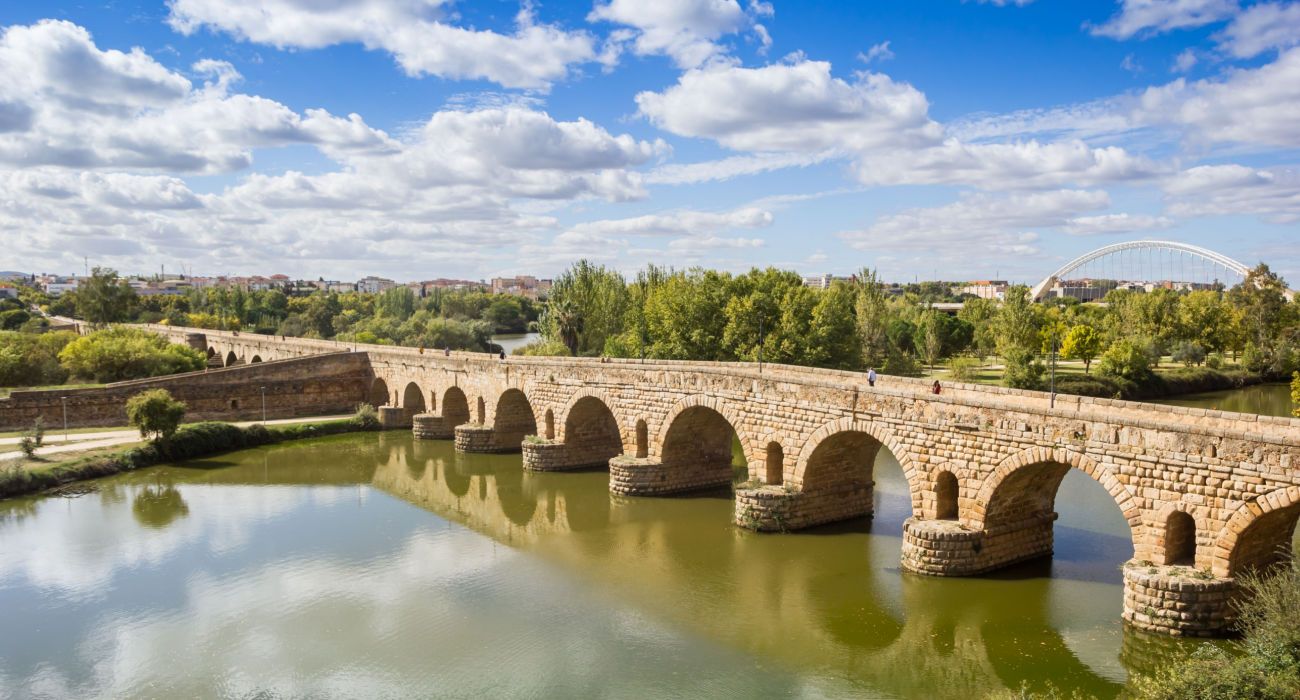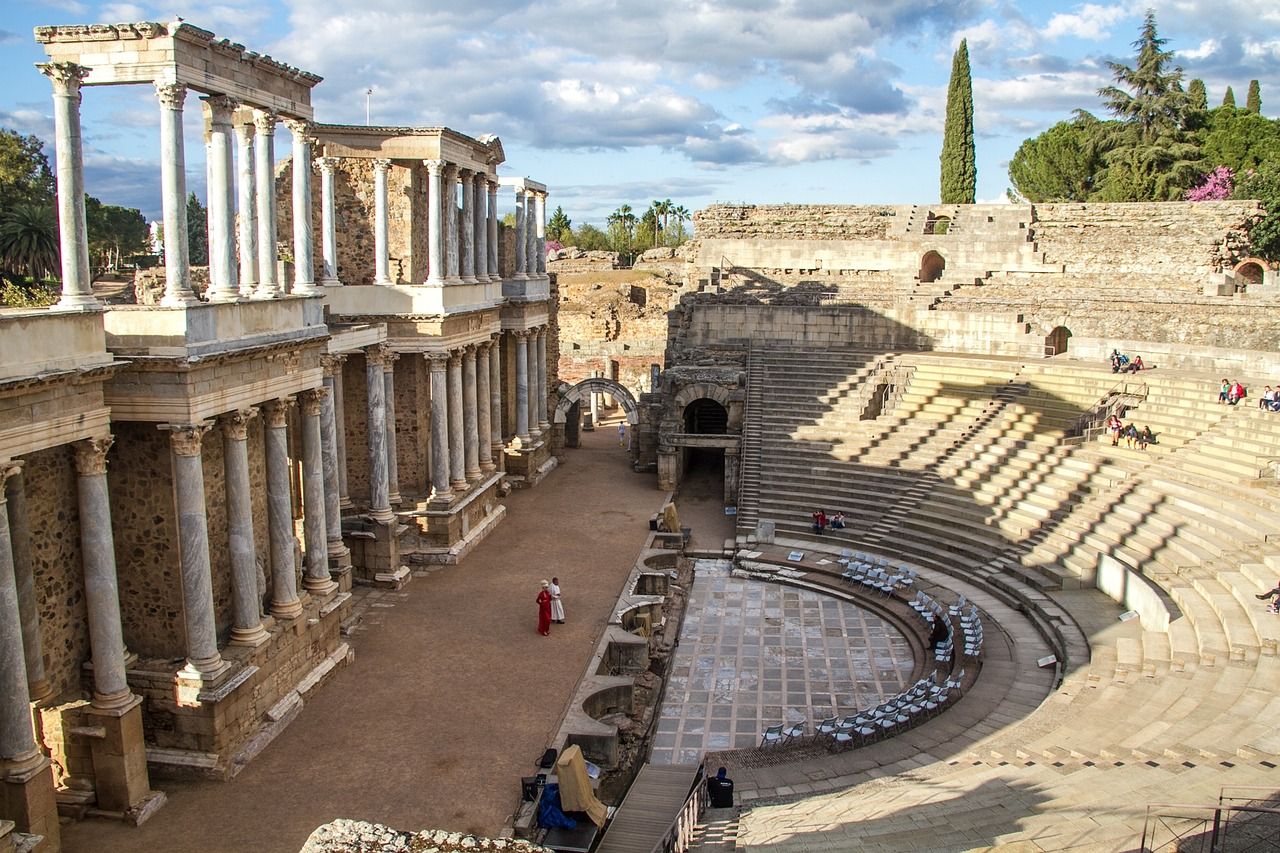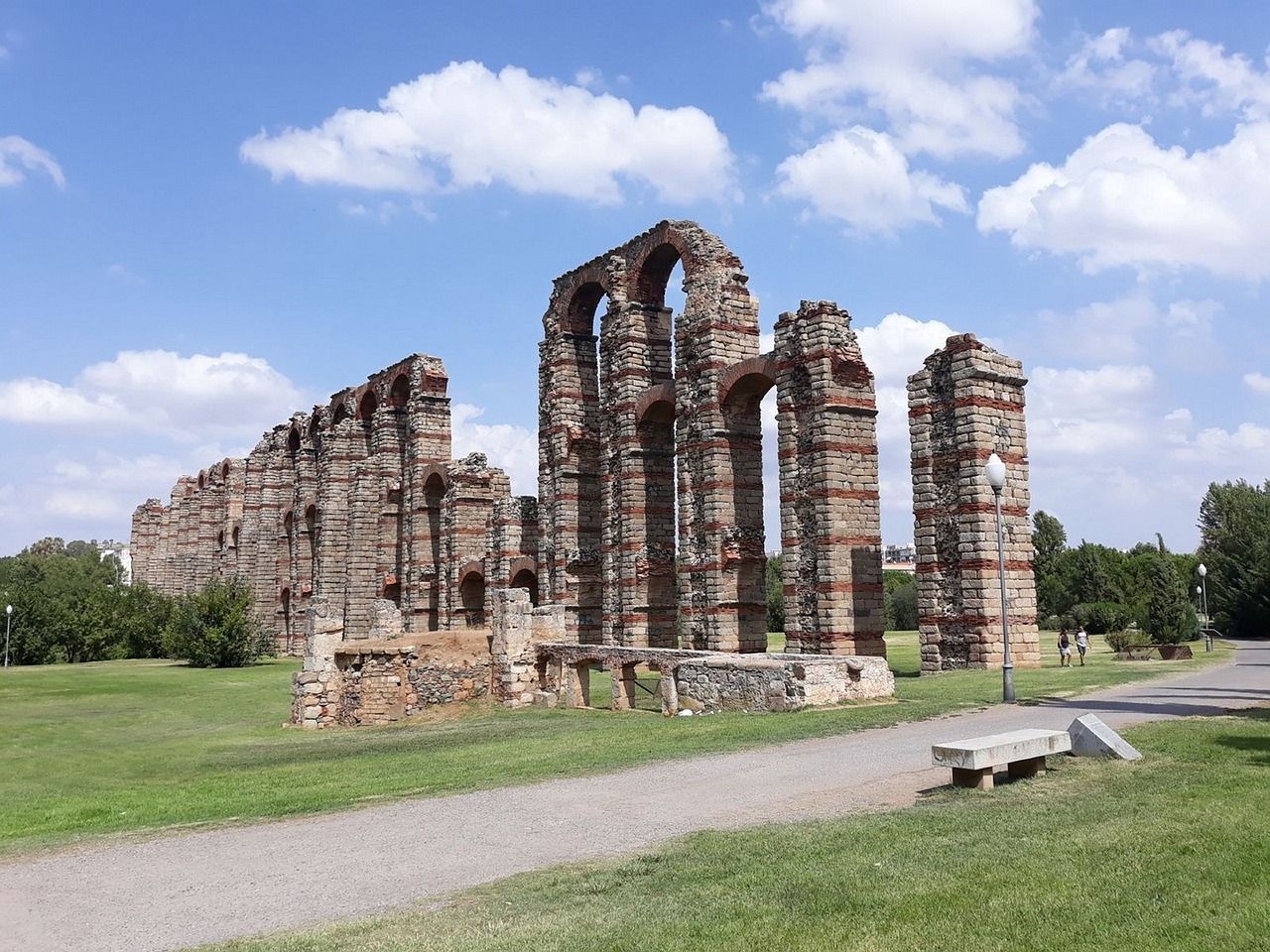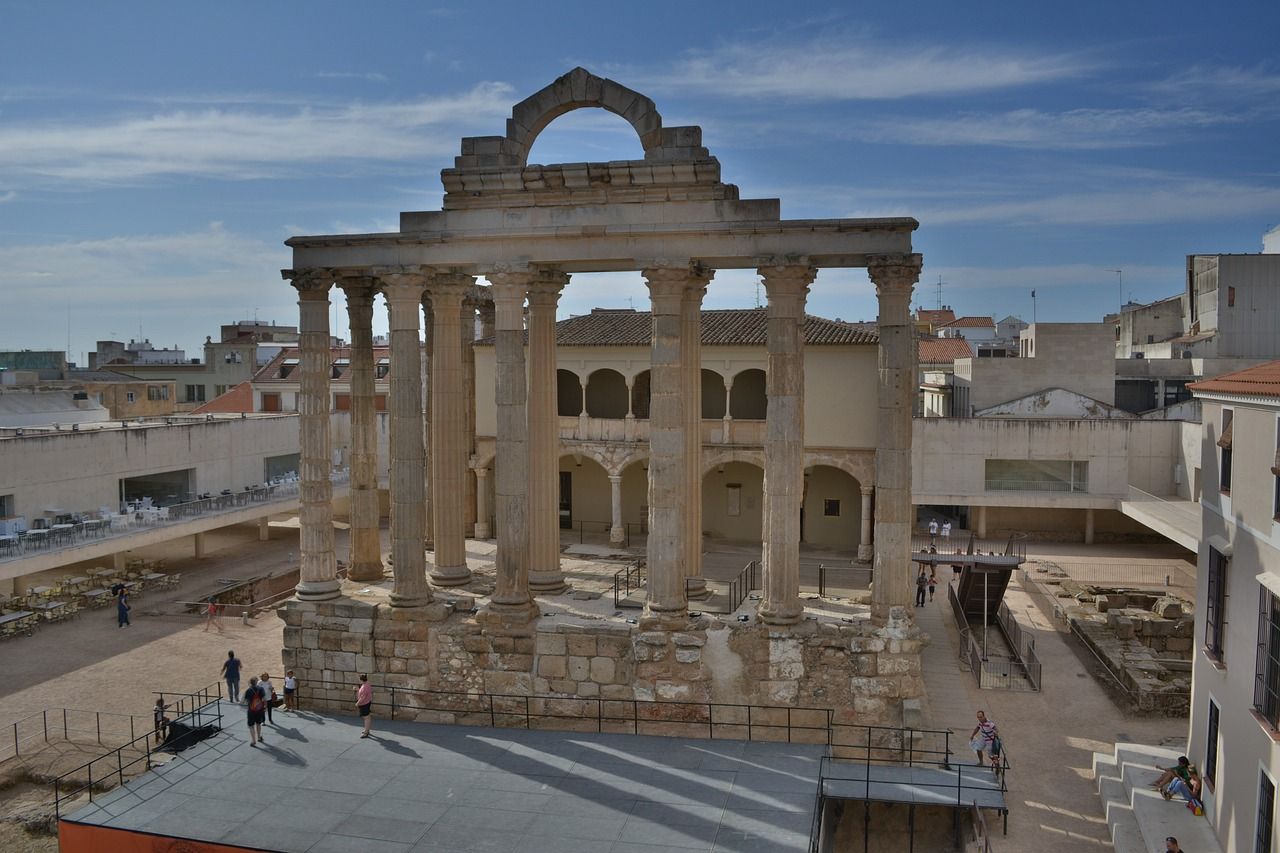Quick Links
Spain is full of excellent Roman ruins - it boasts everything from the only mostly intact Roman city walls to a city only just discovered in the Spanish Pyrenees - with researchers still unsure of its ancient name or place in history. One of the most rewarding cities to visit in Spain to discover the Roman period is the Spanish city of Merida. Merida was once the important Roman city of Augusta Emerita.
Merida (or Augusta Emerita) is famous for having the longest Roman bridge still standing. Without a doubt, Spain is one of the countries of the Mediterranean region with some of the best Roman ruins and some of the most accessible ruins. Many of the ruins found in Augusta Emerita are also older ruins from the late Republic and early Empire times (many of the Roman ruins elsewhere are from Antiquity or the Byzantine periods).
The Roman Colony Of Emperor Augustus' Veteran Legions
Augusta Emerita was a Roman colonia founded by Roman Emperor Augustus for his retired veteran soldiers. Coloniae were originally Roman outposts in conquered territory to help secure it, eventual the term came to denote the highest status of a Roman city - it is the origin of the English word "colony."
The Roman word for 'retired' or 'veteran' was "Emeriti" and so the name of the city "Augusta Emerita." Emperor Augustus (originally called Gaius Octavius) was the adopted son of Julius Caesar. He defeated Mark Antony and Cleopatra and went on to rule the whole Roman Republic as it transitioned to the Roman Empire.
- Roman Name: Augusta Emerita
- Founded: 25 BC
The soldiers who founded this city in 25 BC were the veteran legions of the Cantabrian Wars of the legions Legio V Alaudae, Legio X Germina, and possibly Legio XX Valeria Victrix.
The Importance Of Merida/Augusta Emerita
The veteran city of Augusta Emerita grew to become the capital of the Roman province of Lusitania and was one of the largest cities in Spain (Hispania). It was counted among the most important cities of the Roman Empire. It had three aqueducts and all the trappings of an important Roman city. It sat on a strategic Roman route that connected the gold mines of Spain as well as an important crossing of the Guadiana River.
The ruins of Augusta Emerita are today protected in the sprawling Archeolgoical Ensemble of Merida and are UNESCO World Heritage Listed. Among the Roman ruins are also an important Moorish Alcazabar (fort) and two early Christian churches.
Archeolgoical Ensemble of Merida:
- April to September: 9.00 am to 9.00 pm
- October to March: 9.00 am to 6.30 pm
- Entry Fee: €15 ($16)
Augusta Emerita, or Merida, continued to be an important city after Roman control collapsed in Spain and during the Visigothic Kingdom of Hispania. The city went into a slow decline during the Moorish period. Today the modern Spain city is a small city of 60,000 close to the border with Portugal. It is a place where one can trace Spanish history from Roman times through the Moorish times into modern times.
The Dizzying Number Of Roman Ruins Of Augusta Emerita
"The well-preserved remains of the old city include, in particular, a large bridge over the Guadiana, an amphitheatre, a theatre, a vast circus and an exceptional water-supply system. It is an excellent example of a provincial Roman capital during the empire and in the years afterwards." - UNSECO
Today visitors can see the remains of many of the Roman structures and buildings - sometimes, they are not even ruins but still functioning structures still working (like the famous Roman Bridge). More important ancient Roman monuments are found there than in any other city in Spain.
Some of the most important Roman ruins include:
- Roman Theater: Built 16 to 15 BC Has Seating For Around 6,000 Spectators And Renovated During The Later Roman Empire
- Roman Amphitheater: The Amphitheater Was Dedicated In 8 BC & Was Use For gladiatorial Fights & Stated Beast Hunts; it Seated around 15,000 Spectators
- Roman Circus: Built Around 20 BC Was The City's Largest building And Could Seat 30,000 Spectators (The Whole Population of the City)
- Roman Bridge: Spanning 792 Meters, it Is Now The Longest Roman Bridge Still Standing
Other notable Roman ruins include the Los Milagros Aqueduct, built in the early 1st century BC and the Rabo de Buey-San Lazaro Aqueduct to the north of the city (with its subterranean part still well-preserved). Then there are the buildings like the impressive Temple of Diana (built in the late 1st century BC), the Arch of Trajan, the Mithraeum House, the Columbaria (two roofless funeral buildings that are part of the city's necropolis), and others.

